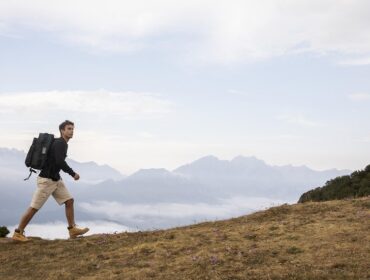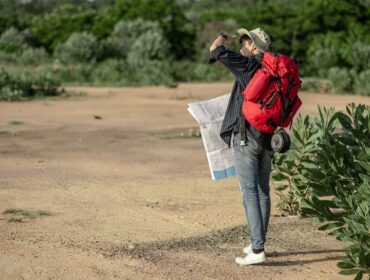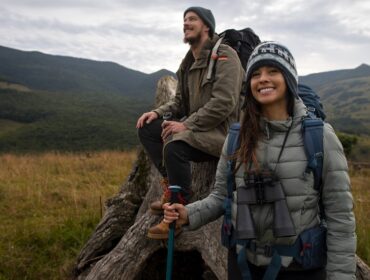Are you tired of overcrowded campgrounds and hefty reservation fees? If you crave solitude, stunning landscapes, and the thrill of self-reliance, dispersed camping might be just what you need. This ultimate guide will take you through everything you need to know about dispersed camping—from understanding what it is to finding the perfect spot. Whether you’re a first-timer or a seasoned camper, this resource is designed to help you make the most of your next adventure.
What is Dispersed Camping?
Dispersed camping refers to camping outside of designated campsites, typically on public lands like national forests or Bureau of Land Management (BLM) areas. Unlike established campgrounds, boondocking doesn’t come with amenities such as toilets, picnic tables, or running water. Instead, you get untouched wilderness and the freedom to set up your camp almost anywhere that’s permitted.
So, how does it differ from traditional camping? Picture a typical campground: reserved spots, neighbors in close quarters, and maybe even a camp store selling marshmallows. Dispersed camping is the opposite. It’s camping on your own terms, away from crowds, fees, and schedules.
While dry camping offers an unparalleled connection to nature, it does have its challenges. The lack of facilities means you’ll need to be self-sufficient and leave no trace behind. This type of camping is ideal for those seeking a minimalist outdoor experience, but it may not suit everyone.
Benefits of Dispersed Camping
Boondocking is not just an adventure; it’s a lifestyle choice with plenty of perks. First and foremost, it’s free. That’s right—most dry camping sites on public lands come with zero cost, making it an excellent option for budget-conscious travelers.
Another major advantage is the solitude. Unlike crowded campgrounds, dry camping offers peace and quiet, allowing you to immerse yourself in nature. Wake up to the sound of birdsong, enjoy uninterrupted stargazing, and hike straight from your tent without bumping into hordes of fellow campers.
Wild camping also lets you experience nature in its rawest form. It’s perfect for activities like hiking, fishing, or simply soaking in the views. Whether you’re enjoying a sunrise over a remote lake or cooking dinner over a portable stove, every moment feels like an escape from the hustle of daily life.
Downsides of Dispersed Camping
As magical as dispersed camping can be, it’s not without its downsides. The absence of amenities means you’ll need to come fully prepared. Forget about bathrooms, trash bins, or even cell service. You’ll need to pack your own water, manage waste responsibly, and navigate using offline tools or maps.
Finding boondocking spots can also be tricky, especially if you’re new to the game. Not all public lands allow camping, and identifying legal areas often requires research. Safety is another concern. From wildlife encounters to unpredictable weather, dispersed camping comes with risks that demand preparation and caution.
But don’t let these challenges deter you. With a bit of planning, you can overcome the hurdles and enjoy a rewarding experience. Start with shorter trips close to home to build your confidence, and always carry a first-aid kit, navigation tools, and plenty of supplies.
Guidelines for Dispersed Camping
Respect for Nature:
- Follow the “Leave No Trace” principle:
- Pack out all trash.
- Minimize campfire impact.
- Respect wildlife.
- Carry out everything you bring, including food, gear, and waste.
Check Local Regulations:
- Verify if camping permits are required, especially during peak seasons.
- Be aware of regional fire safety rules:
- Open fires may be restricted.
- Use a portable camping stove when necessary.
Choose Campsites Wisely:
- Select flat, durable surfaces.
- Camp at least 200 feet away from water sources.
- Avoid fragile vegetation.
- Maintain low noise levels to respect nearby campers.
Safety should always come first when dispersed camping. Start by letting someone know your itinerary, including where you’ll be and when you plan to return. If something goes wrong, they’ll know where to find you.
Pack the essentials: plenty of water, a reliable navigation system, a first-aid kit, and weather-appropriate gear. Be prepared to handle wildlife encounters by storing food securely and keeping a safe distance from animals. And always check the weather forecast before you head out.
How to Find Dispersed Camping Using Google Maps
Google Maps is a surprisingly effective tool for finding wild camping spots. Begin by searching for public lands such as national forests, BLM areas, or state parks. These areas often allow dispersed camping in designated zones.
Switch to satellite view to identify potential campsites. Look for clearings, trailheads, or dirt roads leading into remote areas. Cross-referencing your findings with official maps from agencies like the U.S. Forest Service can help confirm whether camping is allowed in the area.
Pro tip: Download your maps for offline use. Many wild camping locations lack cell service, and having offline access can save you a lot of frustration. Combine Google Maps with a navigation app like Gaia GPS for even more detailed planning.

How to Find BLM Dispersed Camping
BLM lands are a dispersed camper’s paradise, offering millions of acres of wilderness for camping enthusiasts. Managed by the Bureau of Land Management, these areas span deserts, forests, and everything in between.
To find dispersed camping on BLM land, start by visiting the official BLM website. You can also visit recreation.gov, as it stands as the go-to resource for outdoor recreation, bringing together 14 Federal agencies to help manage public lands and waters. BLM’s interactive maps highlight areas where camping is permitted, along with any restrictions or regulations you need to know. Local BLM offices are also great resources for up-to-date information and tips.
If a campsite doesn’t feel right or weather conditions take a turn, don’t hesitate to move or cut your trip short.
BLM dispersed camping is typically free, but some areas may have specific rules, such as stay limits or seasonal closures. Always research your destination before heading out.
By adhering to Leave No Trace principles and preparing thoughtfully, you can enjoy a rewarding and sustainable camping experience while helping to preserve the beauty of public lands for future explorers.
Overall, recreation.gov is your gateway to discovering these sites, featuring detailed resources on locations like Colorado’s Rampart Range Recreation Area, which provides designated dispersed campsites equipped with fire rings and picnic tables.
How to Find Free Camping Grounds
Free camping grounds are abundant if you know where to look. National forests and BLM lands are the most accessible options, but don’t overlook state forests, wildlife management areas, and even some county lands.
To find free camping grounds, use a combination of official government maps, apps, and forums. Local outdoor groups or social media communities can also provide insider tips. Keep in mind that “free” often means “no frills,” so be ready to rough it.
Dispersed camping offers a unique way to connect with nature and escape the crowds. With the right preparation and mindset, it can be a deeply rewarding experience. So pack your gear, grab a map, and embark on your next great adventure. Nature’s waiting!
Frequently Asked Questions About Dispersed Camping
What is dispersed camping?
Dry camping is camping outside of developed campgrounds, typically on public lands, without facilities like toilets or water.
Is dispersed camping free?
Most wild camping spots on public lands are free, but some areas may require permits or have small fees.
How do I find dispersed camping near me?
Use tools like Google Maps, BLM lands, or other public areas.
Can I have a campfire while dispersed camping?
Fire regulations vary by location and season. Check local rules before lighting a campfire, and always prioritize safety.
Do I need a permit for dispersed camping?
Some locations require permits, especially in high-use areas or during peak seasons. Always research your destination beforehand.





